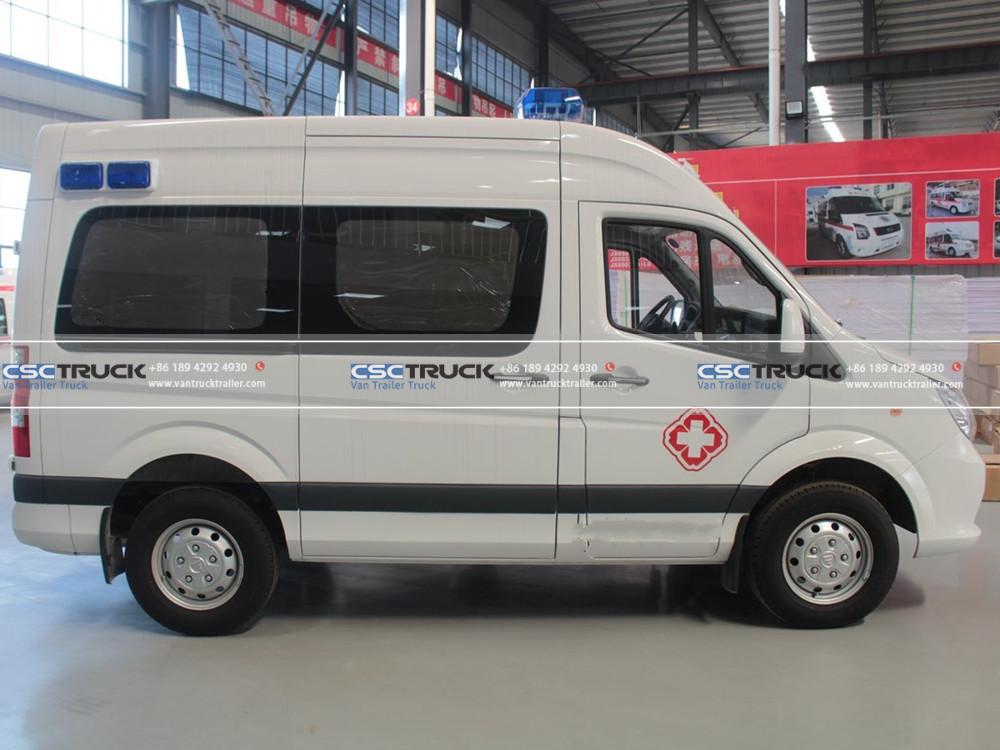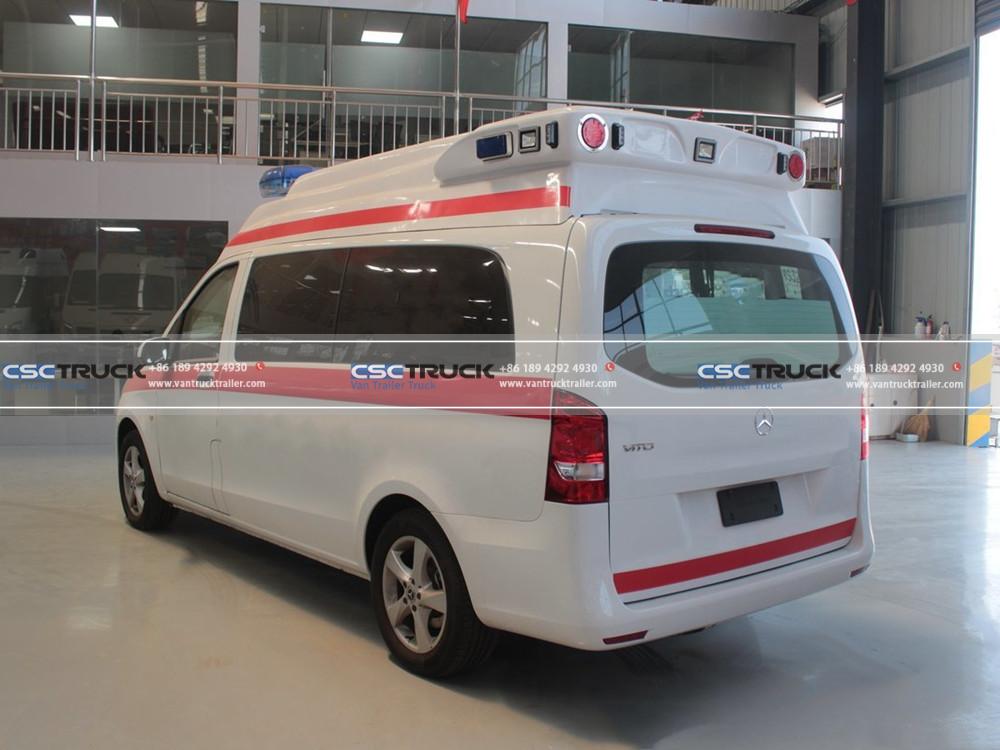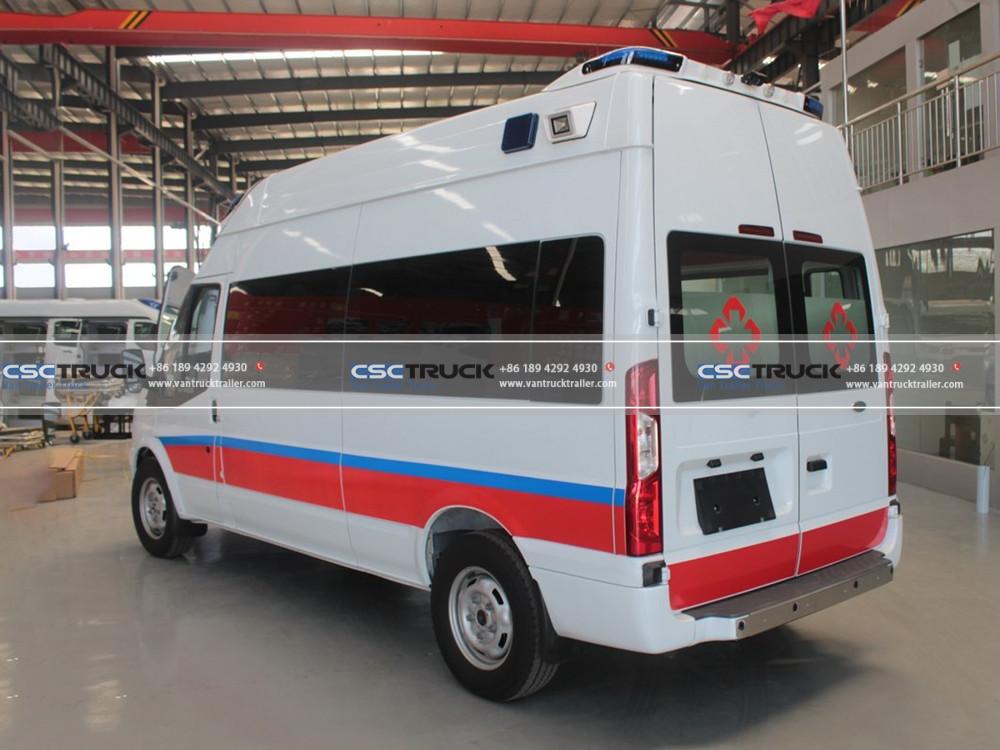In emergency medical services (EMS), time is of the essence, and the difference between life and death often depends on how quickly a patient can receive appropriate care. For emergency responders, having the right vehicle is critical for providing efficient, life-saving interventions. A van ambulance has become one of the most popular choices for EMS organizations due to its blend of practicality, versatility, and high functionality. In this post, we’ll explore the key features that make a van ambulance the best option for emergency medical services, highlighting its advantages over traditional emergency vehicles, such as medical clinic trucks, and its essential role in delivering fast and effective care.
1. Compact Design for Urban Maneuverability
One of the most notable advantages of a van ambulance is its compact design, which provides superior maneuverability, particularly in urban environments. Unlike larger emergency vehicles that can struggle with traffic congestion or navigating narrow streets, a van ambulance can easily weave through tight spaces and reach patients faster. This agility is critical when responding to emergency calls in busy city areas, where traffic jams or crowded locations can impede response times.
The smaller footprint of a van ambulance allows emergency medical personnel to arrive at the scene quickly, especially when compared to larger vehicles such as medical clinic trucks, which are better suited for transporting patients or providing on-site treatment in more expansive areas. In dense urban centers, this mobility is often the deciding factor between arriving on time or missing critical moments that could affect patient outcomes.
Additionally, the van ambulance can park in areas that are otherwise difficult for larger emergency vehicles to access, such as alleyways or residential neighborhoods with limited parking. This flexibility enables EMS teams to provide immediate care without wasting time trying to navigate or locate an accessible parking spot.
2. Optimized Patient Care Space
Another critical feature that makes a van ambulance a prime choice for EMS is its optimized interior space. Despite its compact exterior, modern van ambulances are designed to maximize available space for patient care. This ensures that paramedics and emergency medical technicians (EMTs) can deliver advanced medical services while en route to the hospital.
The interior of a van ambulance is typically equipped with state-of-the-art medical equipment, including cardiac monitors, defibrillators, IV stands, and more. The layout is strategically planned to allow emergency medical personnel to easily access equipment while attending to the patient. In some cases, van ambulances are even equipped with advanced medical supplies, such as ventilators, allowing for complex procedures to be carried out during transport.
Unlike larger vehicles, such as medical clinic trucks, which are often tailored to stationary clinics or field hospitals, the van ambulance provides a streamlined design that facilitates rapid movement while still ensuring the necessary space for patient stabilization. The ability to work efficiently within a confined environment can be crucial when treating critical patients, especially in emergency situations where time-sensitive care is required.
Moreover, the van ambulance’s interior is designed to minimize vibrations and noise, creating a more stable environment for both the patient and medical staff. This makes it easier for paramedics to perform procedures while keeping the patient as comfortable as possible during transport.

3. Advanced Safety Features for Patients and Medical Personnel
When it comes to emergency transport, safety is paramount—not only for the patient but also for the EMS team. A well-equipped van ambulance includes a range of advanced safety features that protect both parties during transit.
For the patient, the van ambulance often includes safety restraints that prevent any movement or discomfort during transport, especially in critical care situations. The ambulance stretcher is securely anchored to ensure the patient remains stable, even during sudden turns or stops. Additionally, the interior is designed with anti-slip flooring and cushioned surfaces to reduce the risk of injury during transport.
For medical personnel, van ambulances come with ergonomically designed workspaces to minimize strain during patient care. The workstations are optimized for quick access to medical equipment, allowing paramedics to perform critical procedures without unnecessary delays. These features are designed to keep medical staff safe and operational during high-stress situations.
Moreover, van ambulances are equipped with robust safety protocols, such as automated braking systems, stability control, and advanced lighting systems. These technologies help ensure that the ambulance remains stable and visible, even under challenging driving conditions. The safety of the medical team is as important as that of the patient, and a van ambulance offers comprehensive solutions to meet these needs.
4. Cost-Effectiveness and Efficiency
While larger vehicles, like medical clinic trucks, are ideal for certain scenarios where a fully equipped mobile medical facility is required, the van ambulance offers a more cost-effective solution for many EMS organizations. These vehicles are typically more affordable to purchase and maintain than larger, more specialized vehicles, making them a practical option for EMS systems with budget constraints.
Additionally, the fuel efficiency of van ambulances is another factor that makes them an attractive choice. Due to their smaller size and lighter weight compared to traditional emergency vehicles, van ambulances consume less fuel, which reduces operational costs over time. In an industry where response times and equipment reliability are critical, being able to operate efficiently while minimizing operating expenses is a significant advantage.
Moreover, the maintenance costs of a van ambulance tend to be lower than those of larger, more complex vehicles. Their simpler mechanics and standardized parts make it easier to find replacement components, and the overall servicing is typically less expensive, which further enhances their cost-effectiveness for long-term use.
The operational efficiency of a van ambulance also contributes to its value. Its quick response time and ability to reach patients faster than larger vehicles lead to better patient outcomes, which, in turn, can reduce overall healthcare costs by ensuring that patients receive timely medical intervention.

5. Versatility for Different Medical Needs
A van ambulance is a versatile vehicle that can be adapted to a variety of medical needs. Depending on the nature of the emergency or the healthcare facility’s requirements, van ambulances can be outfitted with different equipment or modified to meet specific transportation goals.
For example, some van ambulances are configured with advanced critical care equipment for transporting patients who require continuous monitoring, while others may be equipped with basic first aid and stabilization tools for less severe cases. The versatility of the van ambulance makes it ideal for use in a wide range of situations, from emergency response in urban areas to longer-distance transfers of patients requiring ongoing care.
Mobile medical services, such as those provided by medical clinic trucks, may focus more on ongoing care in a stationary setting, while the van ambulance is primarily designed for quick and efficient transport. This flexibility allows the van ambulance to provide essential medical services across different sectors of healthcare, ensuring that it meets the needs of both patients and medical professionals during urgent situations.
In rural areas or underserved regions, van ambulances can be customized to carry additional medical supplies or act as mobile clinics to provide emergency care on-site. Their adaptability ensures that EMS organizations can meet the evolving demands of different medical emergencies while keeping patient care at the forefront.
The van ambulance stands out as a top choice for emergency medical services due to its compact design, optimized interior space, advanced safety features, cost-effectiveness, and versatility. By combining these features, it delivers the right balance of speed, efficiency, and patient care, making it an indispensable tool for EMS teams across the globe. Whether responding to urban emergencies or transporting critically ill patients, the van ambulance is built to meet the challenges of modern emergency medical services, ensuring that patients receive the care they need, when they need it most.

